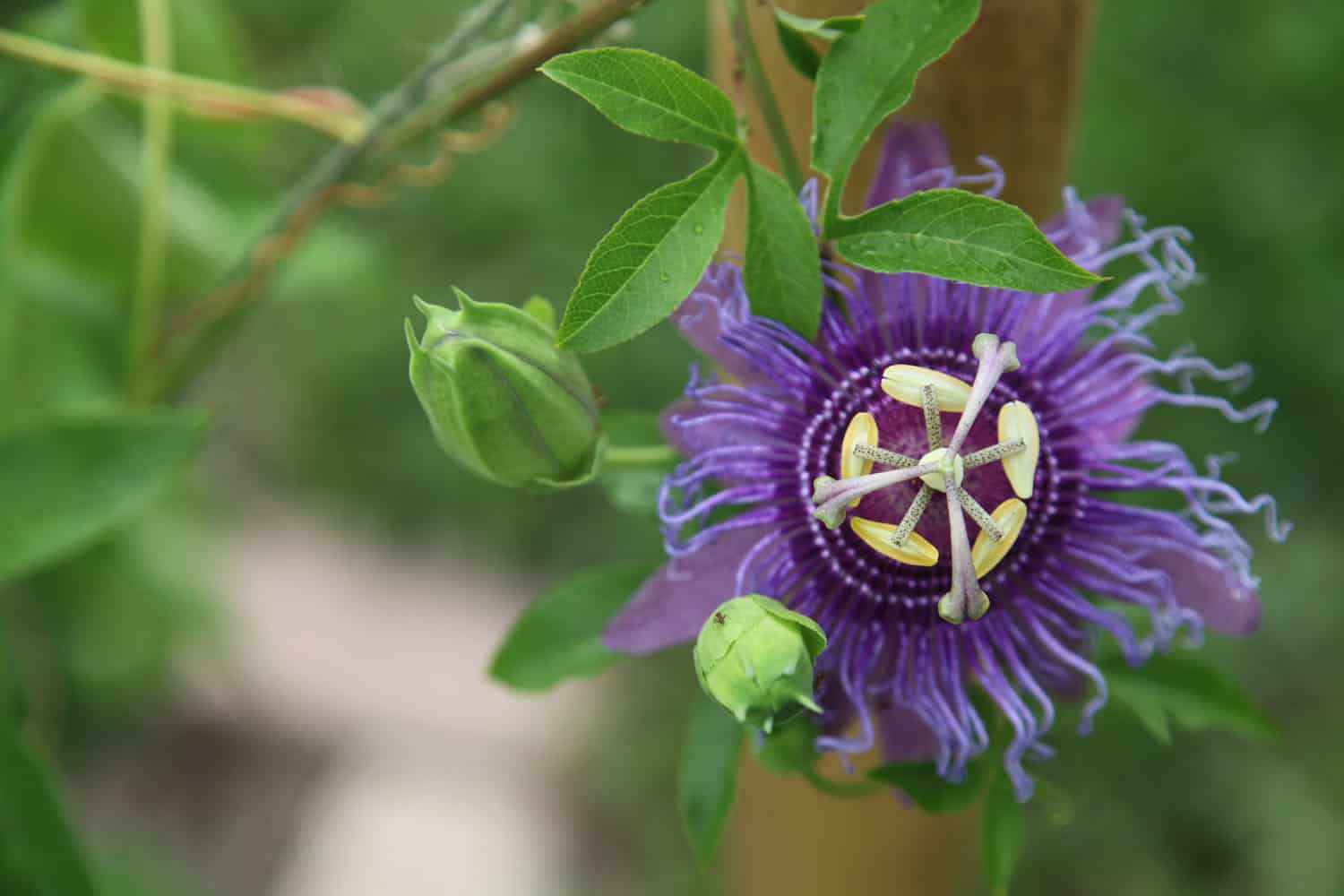
Everyone loves the feel of the tropics. Palm trees swaying in the breeze. Exotic flowers with intoxicating aromas. The fragrant fruit that seems to melt in your mouth. But did you know you can grow cold hardy tropical plants as far north as New York State?
By incorporating some of these cold hardy tropical plants in your garden, you can enjoy your own tropical stay-cation without leaving your backyard!
Cold-hardy tropical plants can be hard to find in local stores. That’s why we have included some of our favorite website sources for these plants, including NatureHills.com and Amazon.
When you click one of our links to a recommended product, Home, Garden and Homestead will receive a small commission for qualifying sales.
Thanks for supporting this website!
We really appreciate it!
Happy Face Emogi!
Best Cold Hardy Tropical Plants for Cooler Climates
Hardy Banana
You can’t get much more tropical than a banana tree. And luckily for most gardeners, there are a few varieties of this cold hardy tropical plant that can survive as far north as New England (USDA Zone 5). Sadly, these banana plants won’t produce edible bananas. But they will delight you with their broad tropical leaves and vigorous growth.
Cold hardy tropical banana plants can grow up to 13 feet tall. Cut your hardy banana tree to the ground after the first frost and mulch heavily over the stumps. This will protect the tough “tropical” plant so it can survive temperatures below zero degrees Fahrenheit. Click here to Buy a Musa Basjoo Banana Tree.
You can also find hardy banana plants at Logees.com.
Toad Lily
Toad lilies (Tricyrtis sp.) are not nearly as popular as they deserve to be. These cold hardy tropical plants have a wonderful, exotic flair with their uniquely intricate blooms. As if that wasn’t enough, the plants are surprisingly tough.
Toad lilies are prized for their attractive foliage for most of the year. But starting at the end of every summer, they dazzle as they burst into bloom. These lilies prefer partial shady areas with rich, loamy soil. The Raspberry Mousse Toad Lily is a classic look for these delightful flowering plants. The flowers show a base of white with a splattering of raspberry purple on the petals. The centers show a flash of yellow to make the flowers really pop in a garden setting. Click here to check the price on Amazon.
Maypop (Passion Flower)
With its stunningly pretty flowers and beautiful vining habit– not to mention its tasty fruit– the maypop is the perfect fit for cold climate gardeners looking for a tropical vibe. This vigorous vine is the hardiest of the passion flowers (Passiflora spp.). Like its tropical cousins, the maypop dazzles with exotic, unique flowers that last from mid-summer through fall.
In warmer climates, this vine can get very aggressive. So, make sure you give it plenty of space. Maypops can survive temperatures below -20 F, and these topical-looking hardy plants can even thrive in a container. Just make sure to give them plenty of sunlight and water.
Maypops are tough to find at local garden centers, so buy them online from Logee’s or Amazon.
Elephant Ears
Elephant ears (Colocasia spp.) can’t survive year-round in climates colder than USDA Zone 7, but they still deserve a special mention in this list of cold hardy tropical plants. The enormous leaves that give elephant ear plants their name simply scream “tropical.” And the giant leaves will give your garden a serious “Wow!” factor.
Elephant ears make a wonderful tropical accent, whether you can grow them in the ground year-round or need to bring them inside during the winter. If you live in Zone 6 or below, you can grow them in a pot or in the ground. But before the first frost, bring your potted elephant ears plant indoors and dig up the corms (bulbs) in the ground and store them in a cool, dry place until spring.
There are many varieties of elephant ear plants that can make a huge impression in your garden. Perhaps the largest leaves are found on Jumbo Elephant Ear (Colocasia esculenta). This massive plant can easily grow 6 feet tall, and they have been known to reach 9 feet tall. The bulb is huge and can measure 17-19 inches. The massive bulb is bigger than a large pineapple! Jumbo Elephant Ear bulbs can sometimes be found at local garden centers, but they are also available online. Click here to check varieties available on NatureHills.com.
Paw Paw
The paw paw seems tropical—even though it’s not. Paw paw is actually native to temperate North America. Its closest relative is the soursop—a broadleaf flowering evergreen tree that grows in the tropical regions of the Americas. In fact, the paw paw is the only temperate member of a very tropical family of trees.
The large, abundant fruit it produces (up to 30 pounds per paw paw tree!) is said to taste like banana custard. And because this tree originates in America, it is cold hardy, pest resistant and virtually maintenance free. Grow these bountiful trees for a tropical look and tropical taste! Just make sure you grow more than one tree for cross-pollination.
Available at NatureHills.com.
One way to enjoy your backyard more is to spend more time cooking and eating outdoors. If you love to barbecue, check out our story about the Best Pellet Grills for Backyard BBQ. A new pellet grill will take your outdoor cooking to a whole new level!
Canna Lily
The canna lily is one of those special plants whose foliage is easily as gorgeous as its flowers. These summer-blooming bulbs are much hardier than they look. Plus, they are very easy to grow in USDA zones 8-11. In colder zones, simply dig up the bulbs in the fall and replant them in the winter.
The exotic tropical foliage and flower colors make canna lilies a garden favorite. The flowers are traditionally orange, but some varieties feature yellow flowers and even deep red. The assortment of mixed canna lily bulbs pictured above offers different colors that bloom all summer long for months of enjoyment. The plants grow 48-60 inches tall. Click here to check the price on Amazon.
Some of the most dramatic varieties of canna lilies feature very dark foliage that calls attention to the plants even when they are not in flower. Some varieties even have striped, multi-colored leaves. Canna Pink Sunburst has–you guessed it–pink flowers. It’s large leaves are striped with shades of dark green, dark pink and ivory.
Canna lily bulbs can be found at local garden center stores, but the largest selection of different varieties and different flower colors is typically available online. Check the prices.
Hardy Ferns
When most people imagine ferns, they think of the popular (but delicate) houseplants such as Boston ferns. Hardy fern species, however, are about as tough as they come. And several of them are native to North America.
Hardy ferns are ideal for shady areas of the garden. They come in a wide variety of textures and colors, from the classic evergreen Cyrtomium fortunei (Zones 5-9) to the stunning silver-plated Japanese Painted Fern (Zones 4-8). The Japanese Painted Fern was the 2004 Perennial plant of the Year. Many gardeners call this variety the most decorative landscape fern, because its striking gray-green fronds and red stems. This is a slow spreading plant that thrives in shade or partial shade in moist, well-drained soil. Click here to check the price and availability.
Jelly Palm
The Jelly palm, also known as the Pindo palm, is one of the toughest palm trees around. In fact, a Jelly palm can withstand winters down to 10 degrees F. This tough, cold hardy tropical plant is one of very few palm trees able to handle freezing temperatures.
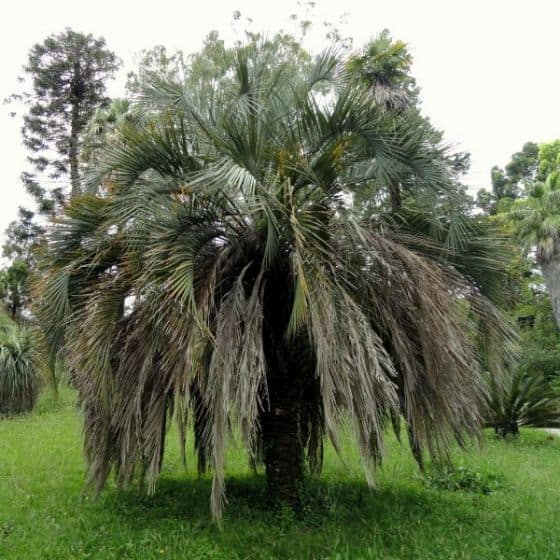
Jelly palms stay nice and compact, especially in cooler climates, only growing to about 10-20 feet tall. They also produce tasty palm fruits in the summer that are popular in jams and jellies (hence the name of the plant). For the more adventurous, the fruits can be fermented into wine. These palms can grow in containers, so gardeners in Zones 6 and colder can still enjoy them. Jelly palms are available at Nature Hills Nursery.
Hardy Hibiscus
With its tropical flair and showstopping flowers the size of dinner plates, what’s not to love about hardy hibiscus?? These shrubby perennials look very similar to their tender tropical relatives.
But the cold hardy tropical plants can withstand winter temperatures down to USDA Zone 4. Hardy hibiscus such as “Lord Baltimore” and “Plum Crazy” (pictured above) are the result of many decades of careful breeding. They are easy to grow and widely adaptable. Plus, they give an unparalleled flower show from summer through fall.
Another great variety is Hardy Hibiscus Cherry Choco Latte.
Clumping Bamboo
Bamboo is the world’s tallest member of the grass family. These wonderful plants can make a delightful addition to any garden that’s inspired by the tropics. Bamboo is a fast-growing plant, and some mature bamboo plants can grow up to 12 inches a day.
Bamboo is an aggressive grower, and many species can be invasive. However, clumping varieties are hardy, low maintenance plants that are a delight in any garden in Zones 5-9. Clumping bamboo does not spread, so it makes a great choice for a privacy hedge between yards or a focal point in the landscape. Check Availability and Prices.
Fig Tree
For a nice cold hardy tropical plant that gives fruit as a bonus, you can’t go wrong with a fig tree. These trees are widely adaptable to different soils and climates, and their fruits are delicious when cooked, dried or picked right off the tree.

Most fig trees are only hardy to USDA Zone 7, but a select few, like ‘Chicago Hardy’ (pictured here) and ‘Violette de Bordeaux,’ can handle winters down to Zone 5.
Here’s more info and pricing for a Chicago Hardy Fig Tree.
Learn more about growing fig trees in containers in our story on growing Perfect Patio Fruit Trees.
Hardy Jasmine
If you’ve ever enjoyed the intoxicating smell of a jasmine in full bloom, you’ll be delighted to learn that there is a hardy species.
This beautiful tropical-looking vine can handle winters down to Zone 6 with some extra protection. In fact, a hardy jasmine needs a cold spell in winter in order to bloom the following spring. Provide your hardy jasmine vine with a trellis to climb on, and plenty of sun and water. It will reward you with many weeks of blooms from late spring through summer.
You can purchase hardy Jasmine at Logees.com.
Also read Flowers and Flowering Plants Add Color and Pizzazz to Gardens.
Tips on Growing Cold Hardy Tropical Plants
Most of the cold hardy tropical plants featured here do not require much specialized care. But it helps to be prepared and to do your research before buying.
1. Read the Label
Like all plants, cold hardy tropical plants have specific light, water and soil needs. Do your research, beyond just checking your USDA Growing Zones, to make sure you can provide for your new plant’s needs.
Most of the cold hardy tropical plants mentioned here can withstand very cold temperatures. But they require high humidity and consistent moisture to thrive.
(Sorry, desert gardeners. You’ll have the best success growing these plants in a humid indoor environment. So, grow tropical plants in a greenhouse. Read Backyard Greenhouses for Every Budget for more info.)
2. Mulch, Mulch, Mulch
Mulching is always a good idea. For tender tropical-looking plants, it’s a 100% requirement. Do not skimp on mulch! Mulch will keep weeds down and make your garden beds pretty. It also insulates your plants’ roots against hot and cold temperatures, and it is vital for retaining moisture in the soil.
3. Water Properly
With a few exceptions, such as the Toad Lily, most plants prefer to be watered deeply. After watering, allow them to dry out a bit before you water them again. Rather than taking the “little and often” approach, water thoroughly—but only when your plant needs it.
4. Fertilize
Cold-hard tropical plants, like their cousins that grow in actual tropical climates, benefit from the right plant fertilizers. Not all plants are the same, and not all plants need the same nutrients in the same amounts. Here are some good fertilizers for specific types of plants.
Dr. Earth Exotic Blend Fertilizer
Non-GMO organic fertilizer for palm, tropical and hibiscus plants. Handcrafted from human and feed grade ingredients, and enriched with multi-minerals. No synthetic ingredients. A very highly rated fertilizer. Check price on Amazon.
Grow More Hawaiian Bud & Bloom Fertilizer
A high-quality water-soluble concentrated fertilizer that contains no urea. Considered a top bloom formula in commercial agriculture, and an excellent fertilizer for virtually all flowering plants. Can be used in soil and foliar applications. Check price on Amazon.
Jobe’s Organic Fruit & Citrus Fertilizer
A fast-acting, organic granular fertilizer for fruit and citrus trees. OMRI listed for organic gardening by USDA. (Certified organic means no synthetic chemicals.) Improves soil conditions, and helps trees resist disease, insects,and drought. Check price on Amazon.
Nelson Plumeria and Flowering Tropicals Food
Balanced ingredients to encourage flower blooms. Higher phosphorus content produces more blooms, while sulfur helps increase soil acidity (which tropical plants love). Can be used for flowering trees, shrubs, tree ferns, orchids, plumeria and more. Check price on Amazon.
5. Winterize
The success of growing tender plants (like the hardy banana) at the edge of their growing zone comes down to winterizing properly. In Zones 5 and 6, for example, you will need to cut your banana to the ground and mulch it with a pile of straw for extra protection from the cold.
Other plants, such as the fig tree, may also need to be brought into a shed or garage to sit out the winter cold. Do your research on proper winterizing before you bring a cold hardy tropical plant home. This is especially true if your garden is at the colder edge of its growing zone.
Growing cold hardy tropical plants is an exhilarating experience. Plants like the hardy banana and canna lily are proof that almost everyone can grow a garden with a tropical look and feel. Try a few of these cold hardy tropical plants yourself for a fun and unique garden experience. Happy growing!



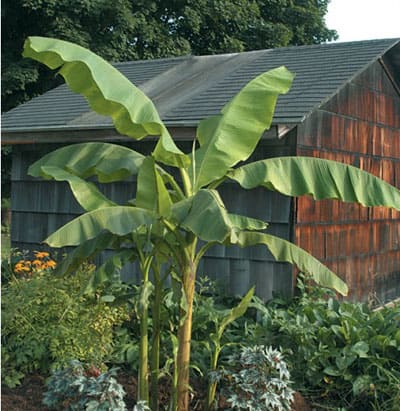
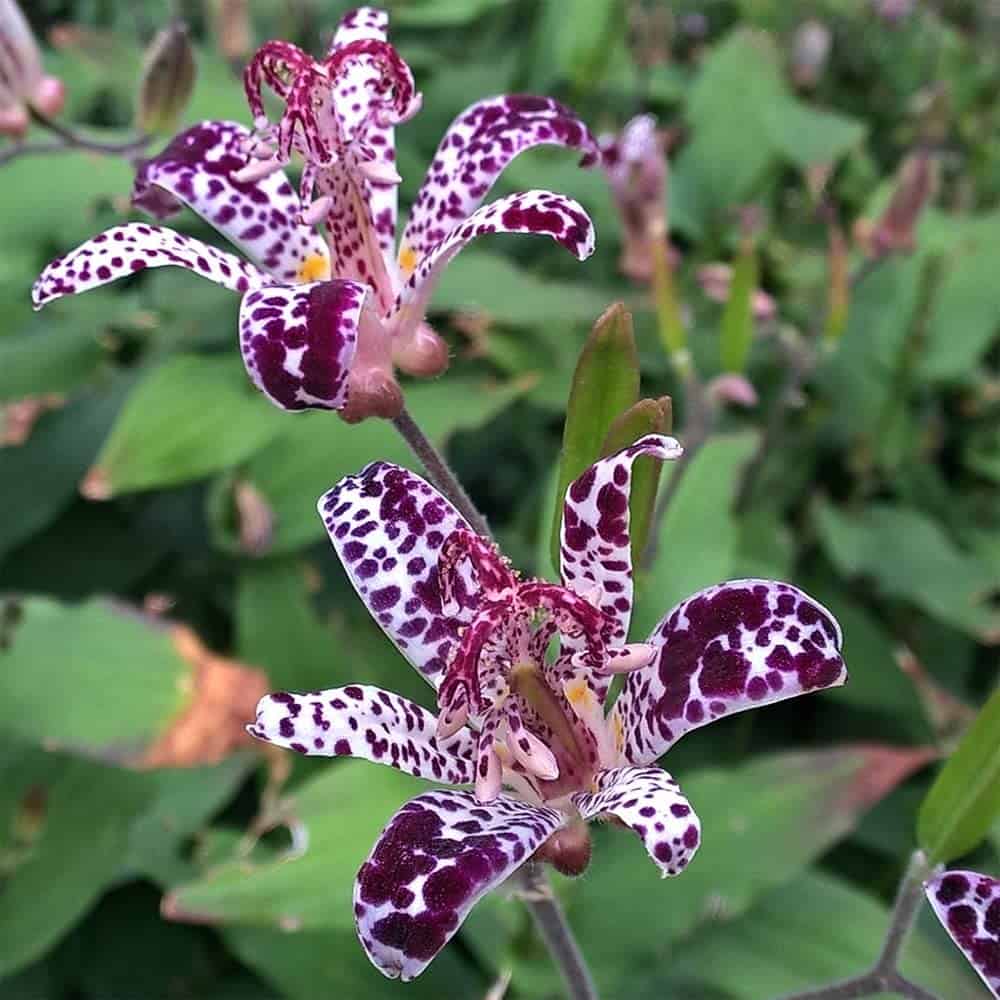
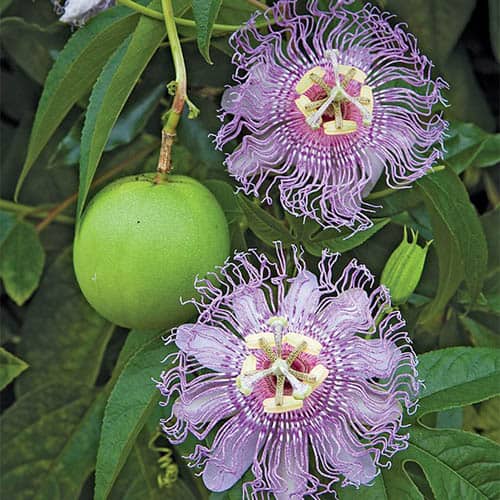
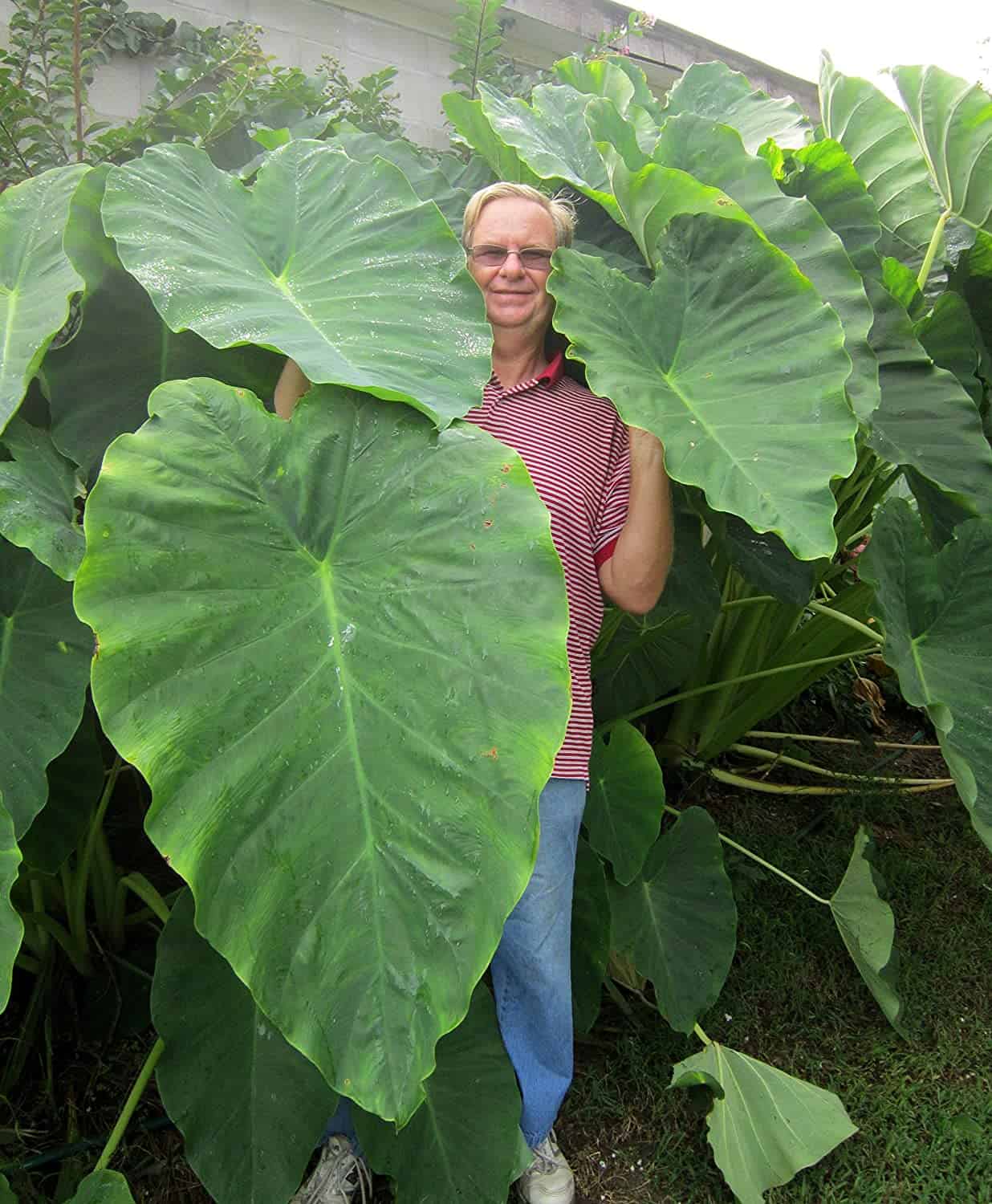
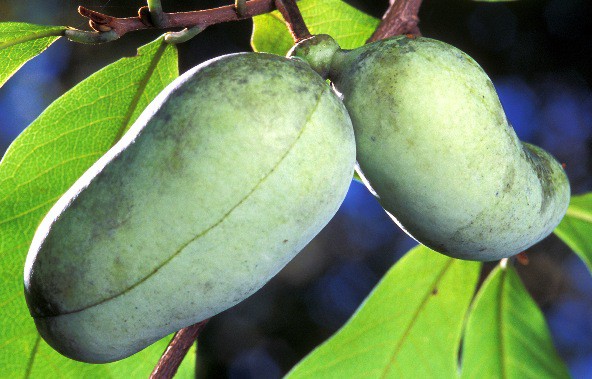
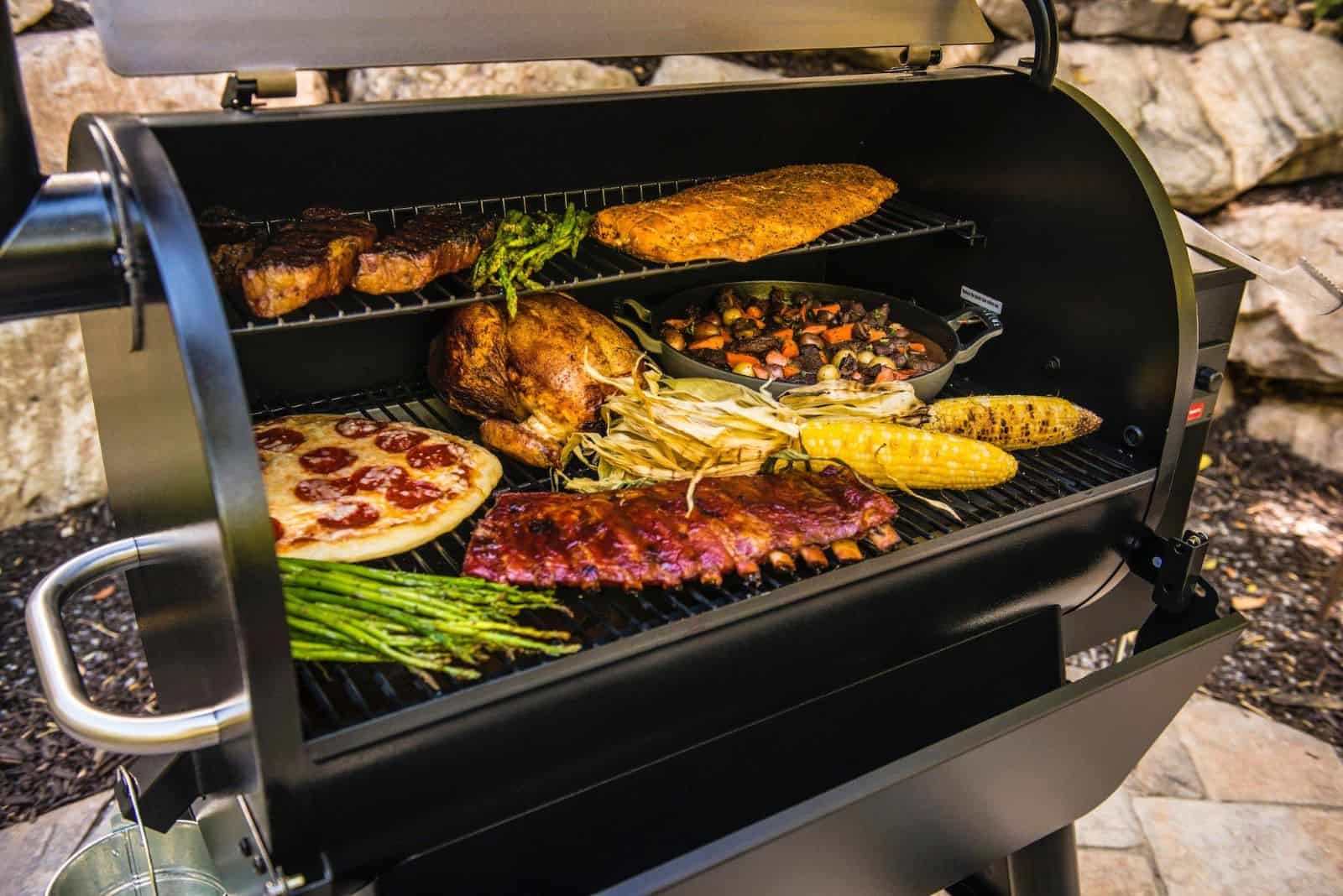
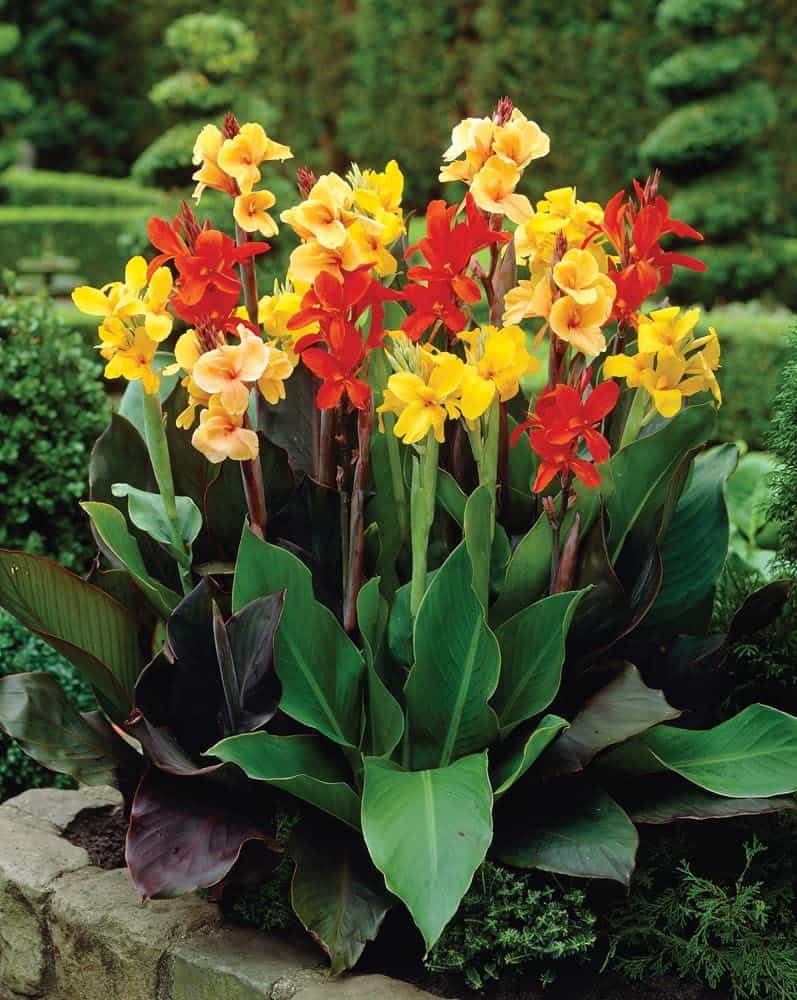
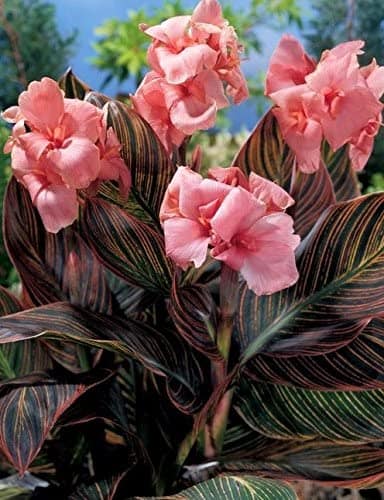
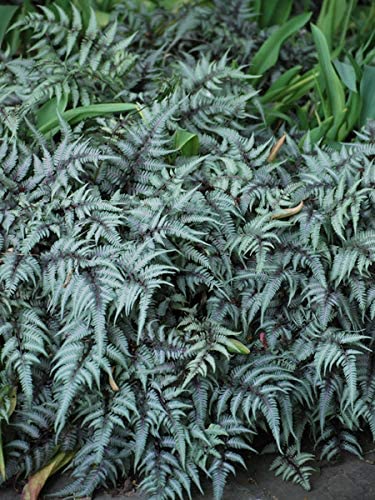
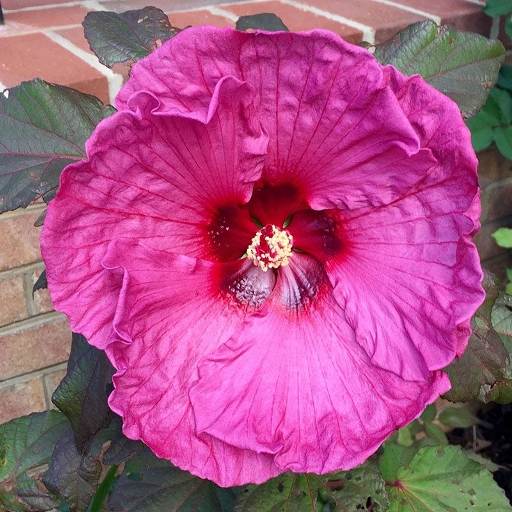

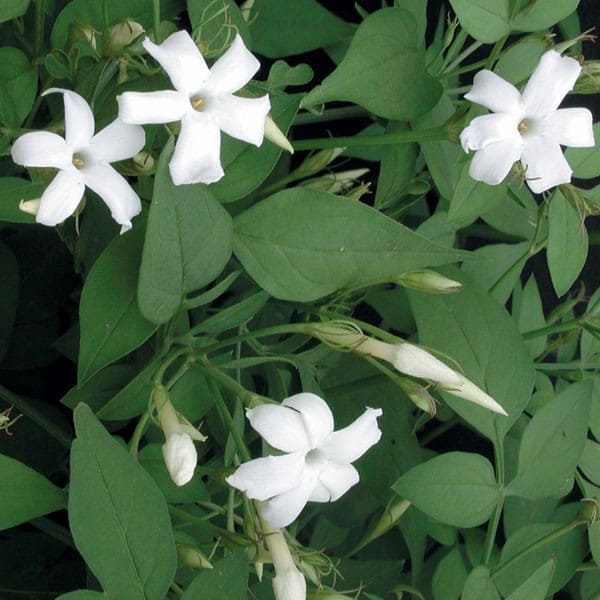
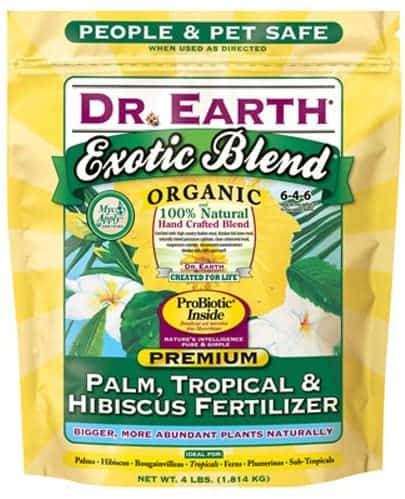
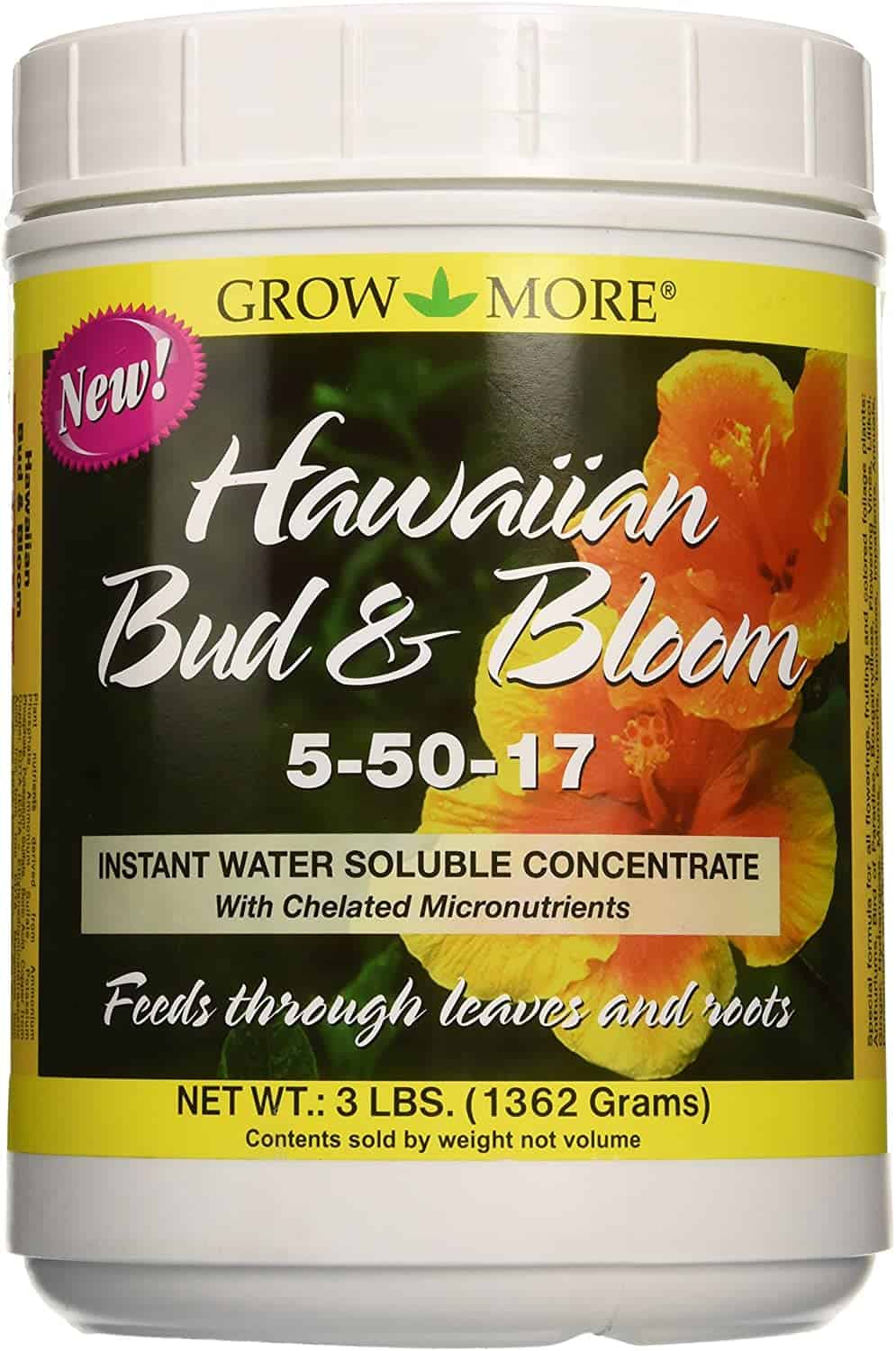

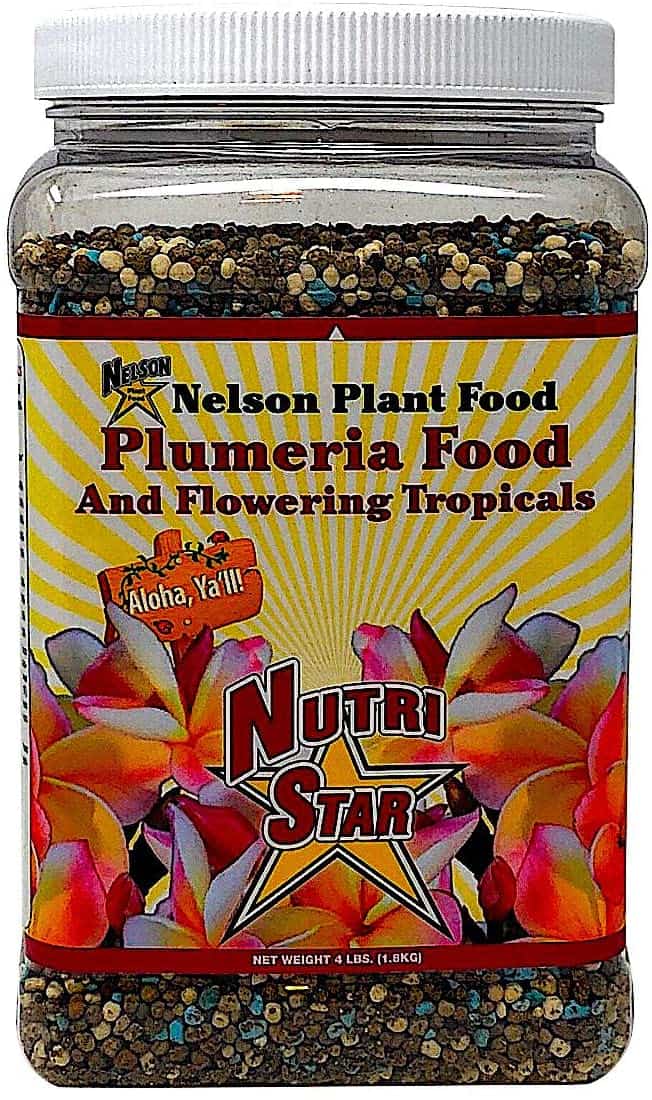

Please send me a catalogue for everything you have in stock for 2020 thanks, sarah.
Sarah– Thanks for your comment. To get a complete list of the plants that Logee’s has in stock, visit http://www.logees.com or email info@logees.com. In the USA you can also call 860-774-8038.
Hello Home Garden and Homestead,
Can I grow soursop (guanabana) which is tropical tree in colder climate? In Calgary, zone 3a?
Bless you, Yan Chalupnicek.
Jan–
Unfortunately, soursop is a tropical plant that cannot stand temperatures below 3 °C (37 °F). Sorry.
Randy